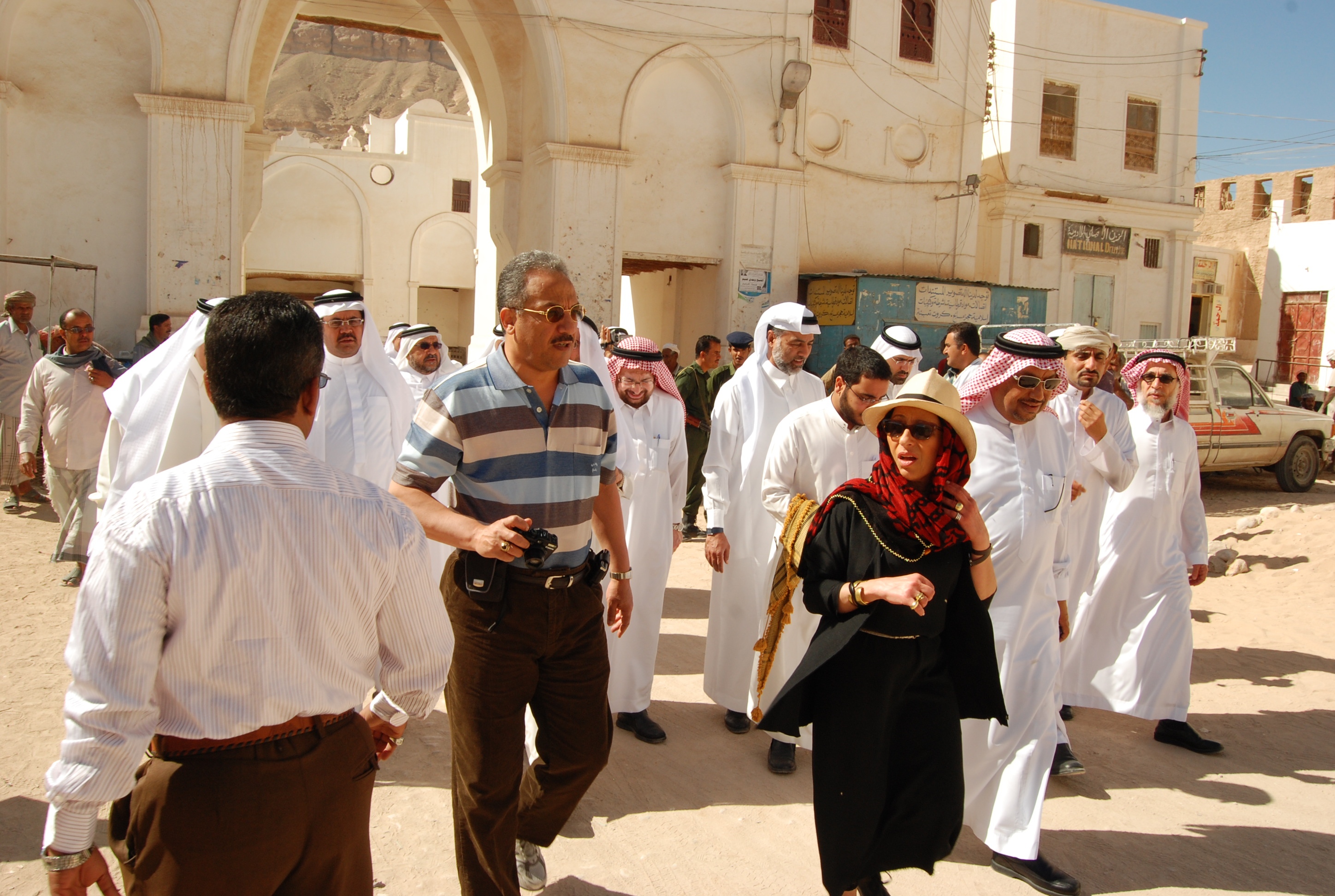 Award-winning architect Salma Samar Damluji speaks to GreenProphet about her mud architecture work in Yemen and why Dubai’s property development mentality is ruining the Middle East
Award-winning architect Salma Samar Damluji speaks to GreenProphet about her mud architecture work in Yemen and why Dubai’s property development mentality is ruining the Middle East
The Middle East may be a fascinating place politically but architecturally, it’s on its last legs. Years of corruption and poor governance mean it’s slowly becoming one of the ugliest places on earth. You just need look at at the sprawling mess of glass and metal in Dubai to realise that something has gone awry. Salma Samar Damluji, an Iraqi architect of 30 years says that greed and corruption is behind the fall of architecture and insists that this money rush is destroying the region’s architectural heritage one building at a time.
And no-one knows this more than Damluji. She has fought what she calls architectural recolonisation in Egypt alongside Hassan Fathy who championed mud architecture practiced by the falaheen (rural peasants) in the 197os. And she’s also worked in Yemen restoring and renovating eco-friendly mud buildings in Yemen’s Wadi Hadramout where ancient building can disappear over night.
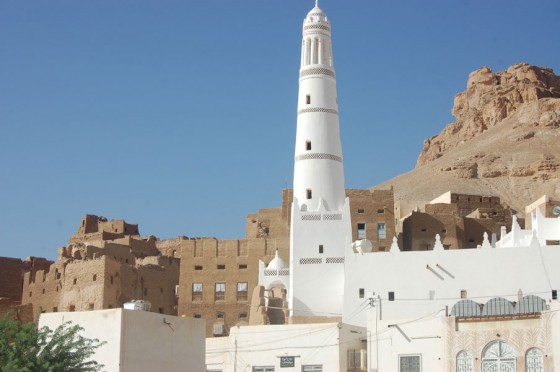 “In Europe, countries have been able to preserve their own culture, architecture and urban heritage but the rest of the Arab world hasn’t done that,” explains Damluji. “So as a result they have no architectural heritage left – everybody is imitating Dubai which is a complete disaster. Unfortunately you see the result of it now all across the Arab region.”
“In Europe, countries have been able to preserve their own culture, architecture and urban heritage but the rest of the Arab world hasn’t done that,” explains Damluji. “So as a result they have no architectural heritage left – everybody is imitating Dubai which is a complete disaster. Unfortunately you see the result of it now all across the Arab region.”
One country that Damluji believes has been able to hold back the mass commercialisation of architecture is Yemen. “When I first went in 1981, there was a kingdom of architecture and there was a huge rich resource of architectural heritage. Yemen, I felt, was the last place in the Arab world that had this incredible civilisation and urban heritage that had been going on for hundreds of years. They were so developed that they were creating these amazing palaces out of mud – very modern too. I felt that there was a cause there and I felt I had to take on that cause.”
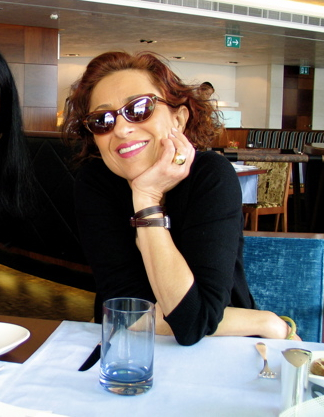 She has been visiting Yemen ever since and from 2005, the Daw‘an Mud Brick Architecture Foundation has supported her work to restore buildings in Wadi Hadramout. Another important institution has been the Cultural Emergency Response (CER) of the The Prince Claus Fund in Netherlands, which funded restoration projects in ‘Aynat and Sah following a destructive flood in the region in 2008.
She has been visiting Yemen ever since and from 2005, the Daw‘an Mud Brick Architecture Foundation has supported her work to restore buildings in Wadi Hadramout. Another important institution has been the Cultural Emergency Response (CER) of the The Prince Claus Fund in Netherlands, which funded restoration projects in ‘Aynat and Sah following a destructive flood in the region in 2008.
Damluji’s effort to protect and preserve the mud architecture of Yemen, however, hasn’t been easy. Civil war, political in-fighting and badly mismanaged resources mean she’s had to rely on outside support to carry out any restoration and she also has to take on other projects just to make a living. And it isn’t getting any easier.
“It’s harder now than it used to be to work in Yemen as a woman because there are more people in Hadramout who are more… I wouldn’t say fundamentalist. There is a worse level of education and people are taking the girls out of school at the age of 12 to get them married and people rely on money that comes from relatives living in Saudi and the Gulf.”
“So, things are difficult but there is still an architectural scene for me to engage in and there are all these builders who I adore but the people don’t like dealing with a woman… They think that to become good Muslims they need to do what the Saudi’s do and not talk to women. I think they’ve got the wrong end of the stick.”
Damluji’s hard work maybe challenging but it is being recognised – she was recently named one of the five winners of the Global Award for Sustainable Architecture. The one thing she wants the award to do, however, is bring more attention to the need for architectural restoration in Yemen. She says she is going to be bringing out her begging bowl and say ‘yalla, where’s the money’. “The Yemeni residents give me such a rough time but I think that maybe years down the line people will appreciate the architecture and heritage that I helped preserve.”
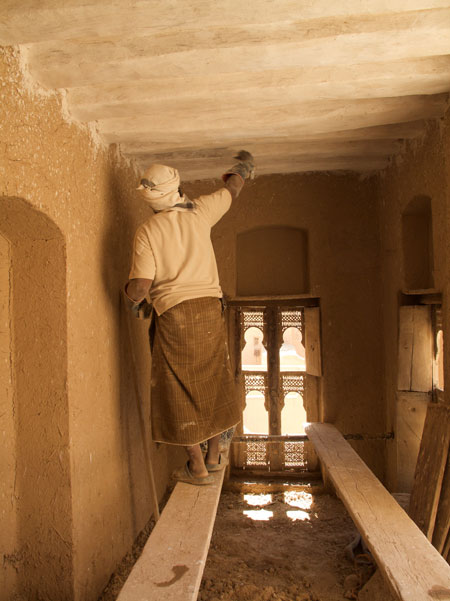 When I ask Damluji why architectural heritage is so down the list of priorities in the region, she pauses and replies with one word – greed. “I think it’s all tied up to politics, economics, corruption and how much money people can make from these big construction projects. The amount of money that changes hands during the kind of modern construction is huge and the fact that they annihilate architects from the equation means that developers have complete control over the building.”
When I ask Damluji why architectural heritage is so down the list of priorities in the region, she pauses and replies with one word – greed. “I think it’s all tied up to politics, economics, corruption and how much money people can make from these big construction projects. The amount of money that changes hands during the kind of modern construction is huge and the fact that they annihilate architects from the equation means that developers have complete control over the building.”
Damluji also doesn’t see Masdar as some happy half-way solution. “I don’t know what’s so ecological about constructing in the desert,” she says. “And the other point is that Norman Foster [architectural team behind Masdar] was talking about Hadramout and Shibam in his literature about Masadar but he’s never been to Yemen. I am very cynical about that kind of development … I worked there [UAE] for a couple of years and I know the mentality.”
The things that do keep Damluji motivated and have kept her going back to Yemen for 25 years are the small victories – being able to restore a Sufi dome, conserving an important mosque in Yemen and keeping locals trained in the art of mud-architecture. “I think this thing- restoring architectural heritage – is like a battle and no matter what you do there is always more work to do. So I keep moving.”
: Top photo – Salma Samar Damluji outside Shibam’s gate with a visiting Saudi delegation © Rashid bin Shibraq, Mukalla 2010. 2nd photo – Al Faqih ‘Aynat Mosque in Wadi Hadramut ©SS Damluji, London 2012. Photo of Salma Damluji in Geneva via ©Aydan Balamir, 2007. Final photo – worker applying white wash to the ceilings of newly constructed bathroom at Nasir Ba Surrah’s house in Masna‘at ‘Urah, Daw‘an ©SS Damluji, London 2011.
For more on mud architecture see:
Iraqi Mud Architect Wins Prestigious Sustainability Award
Yemen’s ‘Manhattan of the Desert’ Boasts 400 Habitable Clay Towers
Hasan Fathy is the Middle East’s Father of Sustainable Architecture


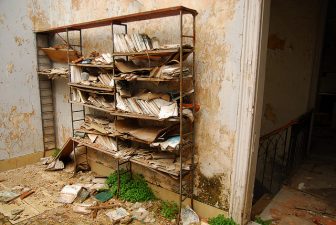

Architectural monuments were developed in slow but assured processes of envision, creativity and constructability.. Architectural heritage was not only materials for tourism and glory, but also continuation of authentic craftsmanship and local ecologies into new epistemic models of science and technology.. No wonder that efforts to preserve the immovable heritage worth appreciation and support, to connect our humane legacy across time..
Urbanism typically requires three main pillars to perform; Social, Economic and Political; while other estates are complimentary for the cohesion of the community.. Ancient and older settlements had engraved significant proofs for such argument; whereas architecture and infrastructure were planned, designed and constructed within this theme.. Architecture with Politics had created Cathedrals and Palaces.. Architecture with Economics had created Bazaars and Market places.. Architecture with Social focus had created Dwellings, Schools and Hospitals..
Urbanity was carefully drawn to distinct the city from surroundings, in a quest for powers and controls.. Urban Distinction had always reached its peak on wings of Archoeconomics, whereas wealth had needed to show off.. Dubai is no different in such a legacy, despite the fatal challenges of continuation and sustainability.. When the Archoeconomics built Dubai, it did not characterize the end-users, therefore the bubble busted.. When the political-architecture glorified Dubai, it did not consider its own builders, resulting in scandalous human rights abuse.. When sociology was absent from urban development, implementations did not incubate arriving expertise nor nesting them down..
The tangible attributes of Dubai’s recent urbanity are subject to short life cycle due to the social disconnect , as cultures of occupation, administration and maintenance are totally uprooted from both temporary and permanent residents.. Nothing tells a cultural identity, nor a futuristic facility, as both are hindered by incompetent yet glow professionalism, and idol extravaganzas.. This is what makes visiting architects, urban planners and visionaries discomfort and restless.. The once was brilliant story to be written, was regretfully overwritten by greedy yet extremely influential decision makers.. There is a great sorry for both Dubai natives and their ambitious Rulers, who were seized between politics and economics..!
Sprawling cities are insired by the instinct to grow forever, which cannot stop unless people choose to exersize their intellect and work to live in balance with their environment. The World needs family planning education to stop the overpopulation on this slowly shrinking planet Earth.